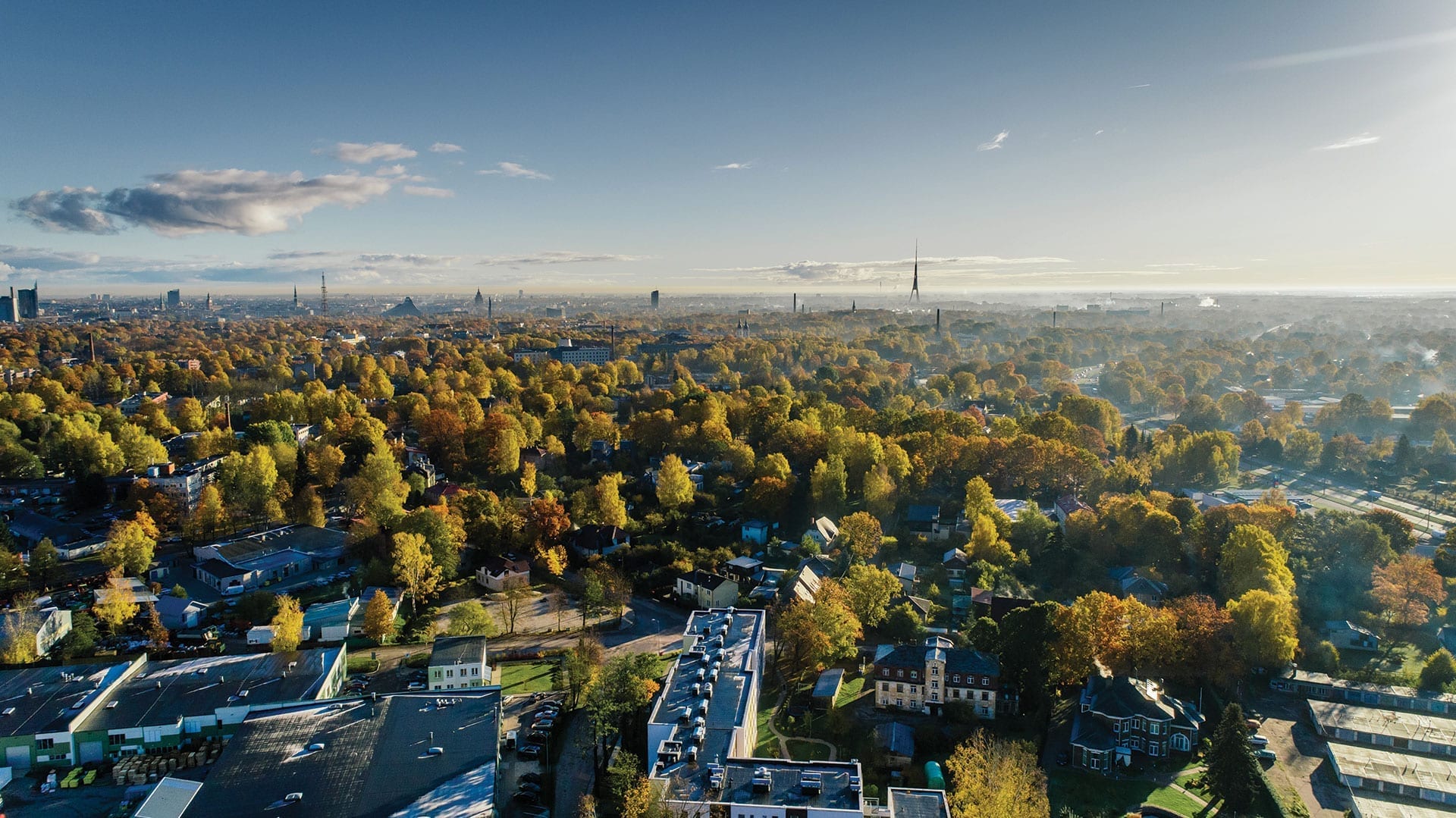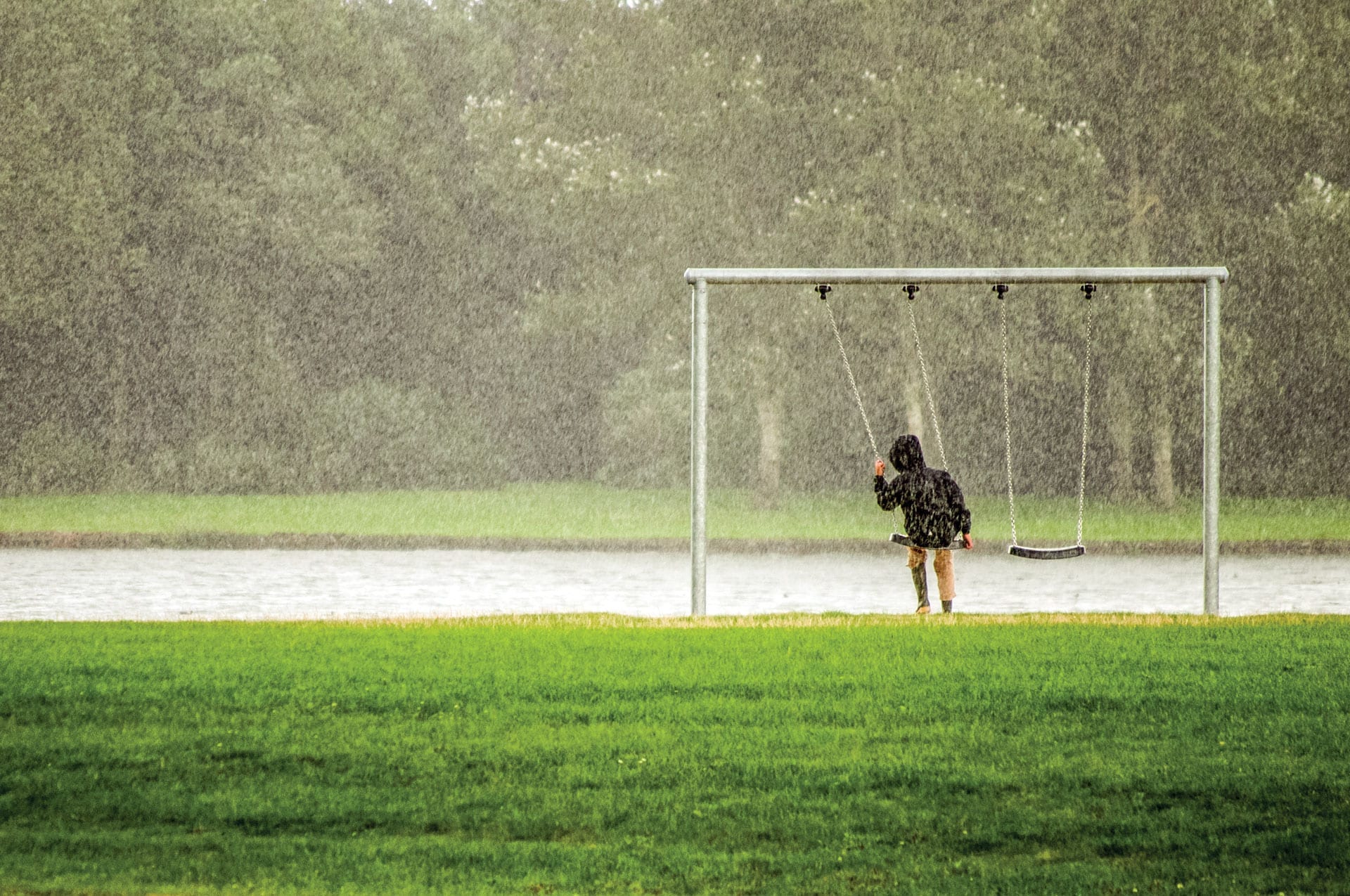How Forests Help Cities Manage Water
The challenges of flooding in cities
Paris spent several days on high flood alert in January, after some unusually heavy rain. The amount that fell in December 2017 into January 2018 was the second-highest in the same period since the winter of 1935 to 1936 (Meteo France, 2018). The River Seine peaked at 5.84 meters on 29 January 2018, up from its normal level for that time of year of 1.5 meters, forcing authorities to suspend traffic, close railway stations,and schools, and evacuate 1,500 inhabitants from their homes. The city suffered significant economic consequences as tourist boats were shut down and inland waterway cargo transport was out of business for weeks. Floods like these are anticipated to become more frequent in Europe with climate change (EEA, 2017), making their effective management one of the most pressing challenges facing European cities.
Winter rainfall is expected to get heavier across much of Europe by up to 35% towards the end of the century, compared to 1971-2000 (EEA, 2017). After long periods of heavy rain, the land becomes saturated with water, preventing subsequent rain from soaking into the ground. Short but intense rainstorms generate floods in a similar way – the rain falls faster than it can permeate the soil, instead flowing over the land surface and rapidly creating a flood (Archer and Fowler, 2015). In cities, the impermeable roads, footpaths and buildings likewise prevent rain from infiltrating into the soil. Instead, the water flows quickly over these hard surfaces, picking up oil, sediments and other pollutants, and carrying them to rivers and storm drains. Increasing urbanization means more natural surfaces are concreted over, making flooding more likely.

Because of these climatic changes and urbanization, flooding is becoming one of Europe’s most costly natural disasters, causing loss of life and economic damage. A 2014 study predicted that, in the EU, average annual economic losses from floods would rise from 4.6 billion euros between 2000 and 2012 to 23.5 billion euros by 2050 (Jongman et al., 2014). The damage to property and infrastructure and losses of agricultural crops and livestock are expensive to repair. Moreover, the disruption to services prevents normal economic activity resuming, as witnessed in Paris.
The direct impacts on people are significant too: the European Environment Agency estimated that more than 2,000 people were killed and 8.7 million affected by river and coastal floods in the European region between 2000 and 2014 (EEA, 2016). On top of losing homes and possessions, people affected by flooding are exposed to contaminated drinking water, electrical hazards while cleaning up, and other health risks. Mental health is also often affected, with some people developing mild depression and other disorders. These impacts have social and economic costs due to lost working days and the costs of healthcare. When floods occurred in England in 2007, public health costs were estimated at £287 million, 9% of the total cost of the flood (WHO, 2013). These high health, social and economic costs, particularly in cities where people and economic activity are concentrated, make it imperative that we redouble our efforts to reduce flooding and its impacts.
Trees provide multiple benefits in cities
Managing urban flooding has relied traditionally on intricate systems of dykes, flood walls, dams and reservoirs, while the pollutants it carries are removed from water by complex treatment processes. Although these technologies have facilitated the development of many European cities, flood protection structures are often not designed for the large floods that will be more frequent with climate change, and merely move the problem downstream. Treating highly polluted water becomes expensive, and even advanced treatment plants have no effect on the dirty floodwaters that run straight off the land into rivers.
This is where trees come in. City planners are increasingly looking to nature, including urban forests and street trees, in combination with wetlands and other nature-based solutions, to help relieve some of their water-related burdens. Reducing flooding using nature works by restoring the natural hydrological processes that slow down rainwater and allow it to soak into the ground. Leaves and branches catch falling rain, which can then drip off slowly over time, and trunks and roots increase the roughness of the land surface, slowing down the water flowing overland. Rain falling where trees are planted can infiltrate into the soil more easily than the rain that hits roads and the other hard surfaces abundant in cities.
A 2013 study of street trees found that trees planted in grass plots allowed 100% of rainfall to soak into the soil. Even trees planted in bare soil reduced the proportion of rainfall flowing over the surface by 62% compared to asphalt without trees (Armson et al., 2013). Through these processes, urban trees can work in combination with traditional flood defenses to reduce the likelihood and magnitude of localized flooding (Depietri et al., 2012). The Danish city of Aarhus, for example, has incorporated this idea into its municipal plan, which aims to double the forested area in the municipality between 2012 and 2030, including planting trees specifically to slow down flood waters.

Trees planted in and around cities, as well as other nature-based solutions, offer a host of benefits beyond their contribution to reducing floods. Their shade helps to cool hot city streets, and they can be planted in areas where people congregate or spend time outside, like at bus stops. They can also help to filter pollutants from the air – a high density of urban trees has been associated with lower rates of hospitalization from asthma in areas where air pollution is high (Alcock et al., 2017). And being able to walk, meet friends, and exercise amongst nature, even in cities, benefits our mental health (WHO Regional Office for Europe, 2016).
These combined benefits have significant economic value too. In the London Borough of Hammersmith and Fulham, 565 trees and shrubs were planted in deprived areas of social housing. In combination with other measures, such as creating grassy basins and rain gardens, they led to 100% of rain falling on the area being diverted away from the storm drain system, reducing the risk of flooding. This and the newly attractive surroundings for residents, training schemes for local young people and the many other advantages of the project added up to a total benefit of £4.39 for every £1 invested (Groundwork, 2016).
Forest landscape restoration for managing water
Cities do not exist in isolation: with water, everything is connected – what happens upstream affects the land and waters downstream, where many cities are located. Deforestation in upstream hills has a particularly important effect on water quality. When rainwater flows over deforested land, it erodes the bare soil, leading to higher sediment loads in rivers. When this land is used for agriculture, pesticides, fertilizers and manure are also washed into rivers and carried downstream.
Conscious of the major benefit that forests provide in filtering sediments and pollutants from runoff, cities are increasingly interested in the watersheds that their drinking water comes from. Currently, a third of the world’s cities obtain their drinking water from protected forests (WWF, 2003). In 2008, the Colombian capital of Bogotá established a water fund, which subsidises long-term land conservation in upstream watersheds, both within the city limits and in lands protected at national, regional and local level, to deliver high-quality drinking water for the more than 8 million people living in the region. This effort prevents an estimated 2 million tons of sediment from entering the city’s water sources, saving up to $4 million per year that would be otherwise spent on water treatment facilities (TNC, n.d.). Vienna’s drinking water similarly comes from mountain springs in forested areas, now designated as water protection zones. The low-impact forest management in these zones means that Vienna’s water is drinkable straight from its source, although it is still purified to guarantee safety.
1/3 of the world’s cities obtain their drinking water from protected forests.
When it comes to the role of watershed forests in preventing floods, the picture becomes more complicated, as these large-scale forests interact with the water system in a different way to the trees and small-scale forests found in cities. For example, deforestation, and the resulting change in land use, affects both rainfall patterns and how that rain is transported to rivers once it falls. It is thought that expanding forest cover upstream only helps to reduce small, localised floods in small watersheds (CIFOR, 2005). We still need more research on the relationship between forests and floods to understand how these complex processes work at a large-scale, particularly over the long-term (IUCN, 2017).
Nevertheless, forests outside cities also support carbon storage, biodiversity, provision of food and medicines, livelihoods for local people, and spiritual, educational and aesthetic values. To maintain these benefits, and because forests are inherently valuable, the International Union for Conservation of Nature (IUCN) is supporting the restoration of the estimated two billion hectares of land around the world that are deforested and/or degraded (WRI, 2013). The Bonn Challenge is a global effort to bring 150 million hectares of this deforested and degraded land into restoration by 2020 and 350 million hectares by 2030. It was launched in 2011 by the Government of Germany and IUCN, and later endorsed and extended by the New York Declaration on Forests at the 2014 UN Climate Summit. IUCN is the Secretariat of the Bonn Challenge.
IUCN’s Forest Landscape Restoration approach, promoted by the Bonn Challenge, aims to restore forest functionality across a large area of land to enhance habitat quantity and quality for biodiversity, mitigate climate change, and benefit local people. It involves planting trees, allowing forests to naturally regenerate or other options depending on the needs of a particular location.